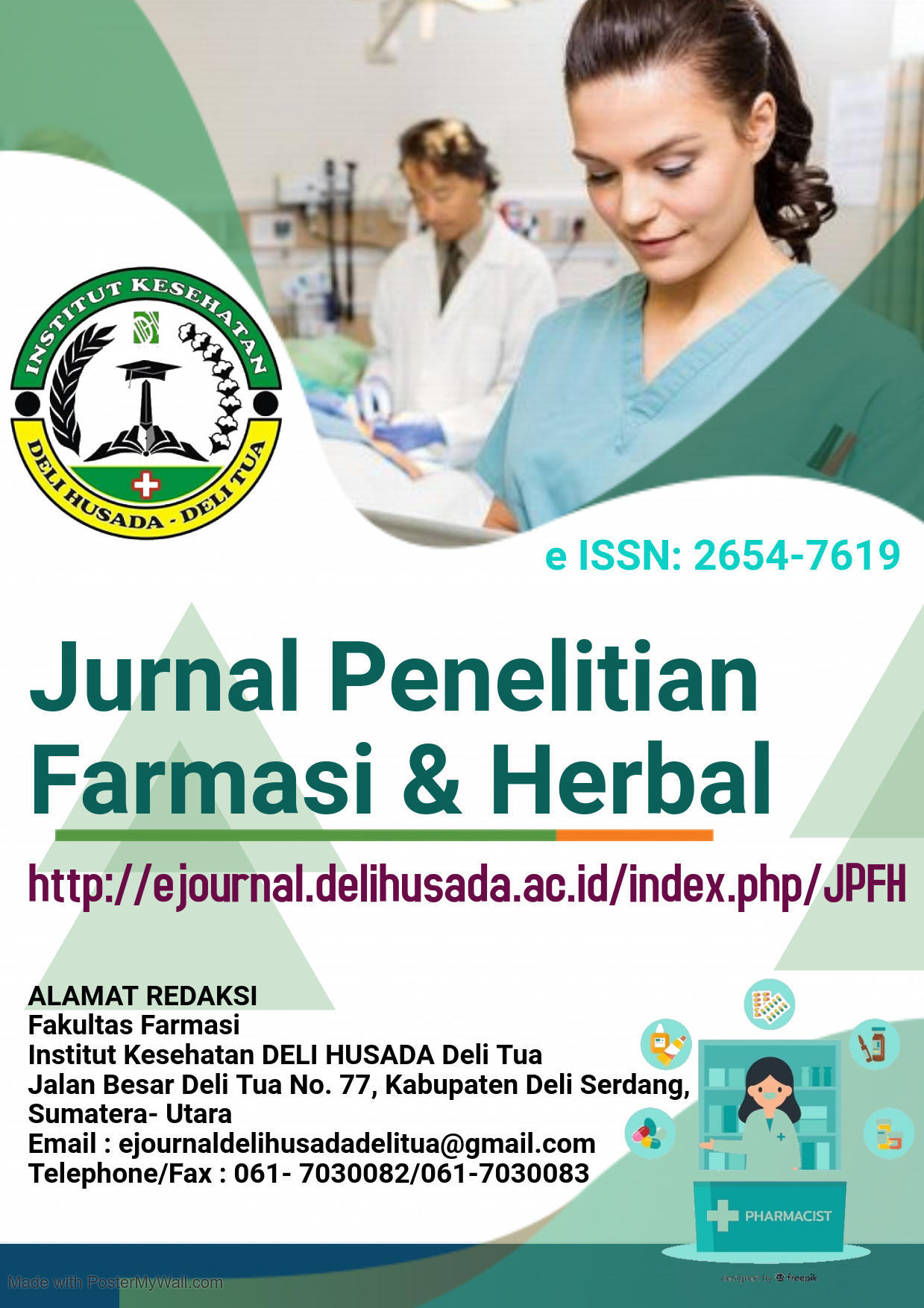COMPARISON OF ANTIBACTERIAL ACTIVITY TEST OF ETHANOL EXTRACT RED GALANGAL LEAF (ALPINIA PURPURATA K. SCHUM) AND TURMIN LEAF (CURCUMA DOMESTICA VAL.) TOWARD ESCHERICHIA COLI BACTERIA AND STAPHYLOCOCUS AUREUS BACTERIA
Abstract
Red Galangal (Alpinia purpurata K. Schum) and turmeric (Curcuma Domestica Val.) plant are icluded in the Zingeberaceae family. The utilization of parts of red galangal and turmeric plants such as rhizomes can be used as medicine. The objective of research is to determine the antibacterial activity of red galangal and turmeric leaves extracts. Examination of simplicia characteristics include : macroscopic, microscopic examinations, determination of water content, determination of ash content. Phytochemical screening includes examination of classes of alkaloids, flavonoids, glycosides, saponins, tannins and steroids/triterpenoids. The extraction was done by maceration using 96% ethanol as solvent. The antibacterial activity by agar diffusion method to using paper discs against Escherichia coli and Staphylococcus aureusbacteria. Simplex characterization for red galangal dan turmeric were showed water level of red galangal is 4,73% and turmeric is 6,83%. Ash content of red galangal is 3,64% and turmeric is 5,45%. The results of phytochemical screening of red galangal is alkaloids, flavonoids, glycosides, saponins, tannins and steroids/triterpenoids. Turmeric is alkaloids, flavonoids, glycosides, saponins, tannins. The results of antibacterial activity test showed that there were antibacterial differences of leaf extract of red galangal ant turmeric leaves in which turmeric leaves were more effective against Escherichia coli and Staphyloccus aureus than red galangal.
Downloads
References
Agoes, A. 2010. Tanaman Obat Indonesia. Jakarta: Salemba Medika
Agus Syahrurachman, dkk. 1994. Buku Ajar Mikrobiologi Kedokteran Edisi Revisi. Jakarta : Bina Rupa Aksara.
Dorland, W.A. Newman, 2002, KamusKedokteran Dorland, alih bahasa Huriwati Hartanto, dkk., edisi 29, ECG, Jakarta.
Kuswandi, M., Iravati, S., Asmini, P. Dan Hidayati, N., 2001, Daya Antibakteri Minyak Atsiri Cengkeh (Syzygium aromaticum, L.) Terhadap Bakteri Yang Resisten Antibiotika, Pharmacom, Vol. 2 No. 2:51-56.
Nursal E., Sudharto, PS., R. Desmier de chenon. 1997. Pengaruh Konsentrasi Ekstrak Bahan Pestisida Nabati Terhadap Hama. Balai Penelitian Tanaman Obat. Bogor.
Pulungan, C.P. 2009. Fauna Ikan dari Sungai Tenayan, Anak Sungai Siak dan Rawa di sekitarnya. Berkala Perikanan Trubuk, 37: 78-90.
Radji, M. 2011. Buku Ajar Mikrobiologi Panduan Mahasiswa Farmasi dan Kedokteran. Jakarta : Buku Kedokteran EGC.
Robinson, P. (1991) ESP Today: a Practitioner’s Guide. Hemel Hempstead: Prentice Hall International.
Sundari, D. 1996. Tinjauan Hasil Penelitian Tanaman Obat di Berbagai Institut III. Departemen Kesehatan RI, Jakarta







